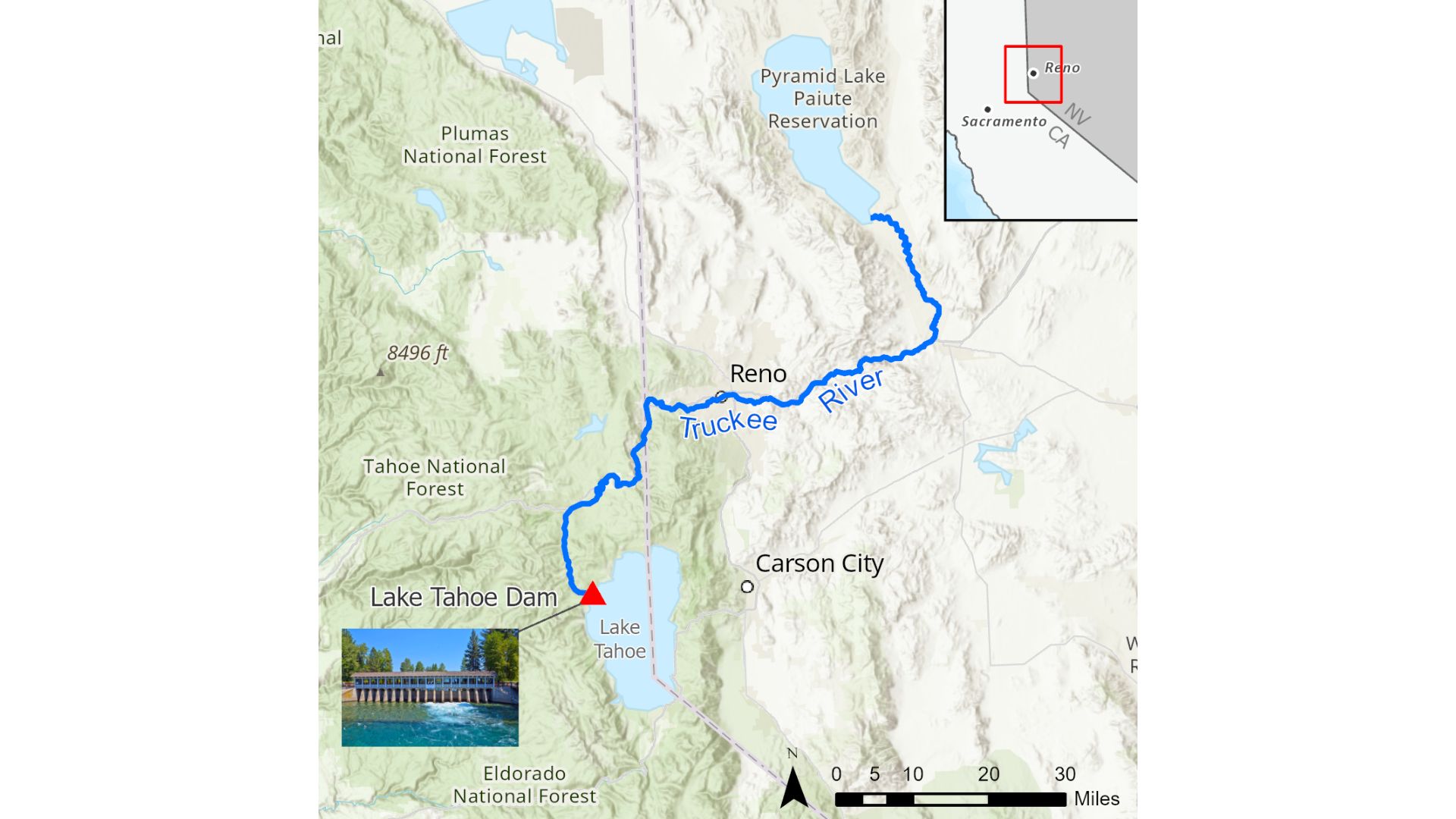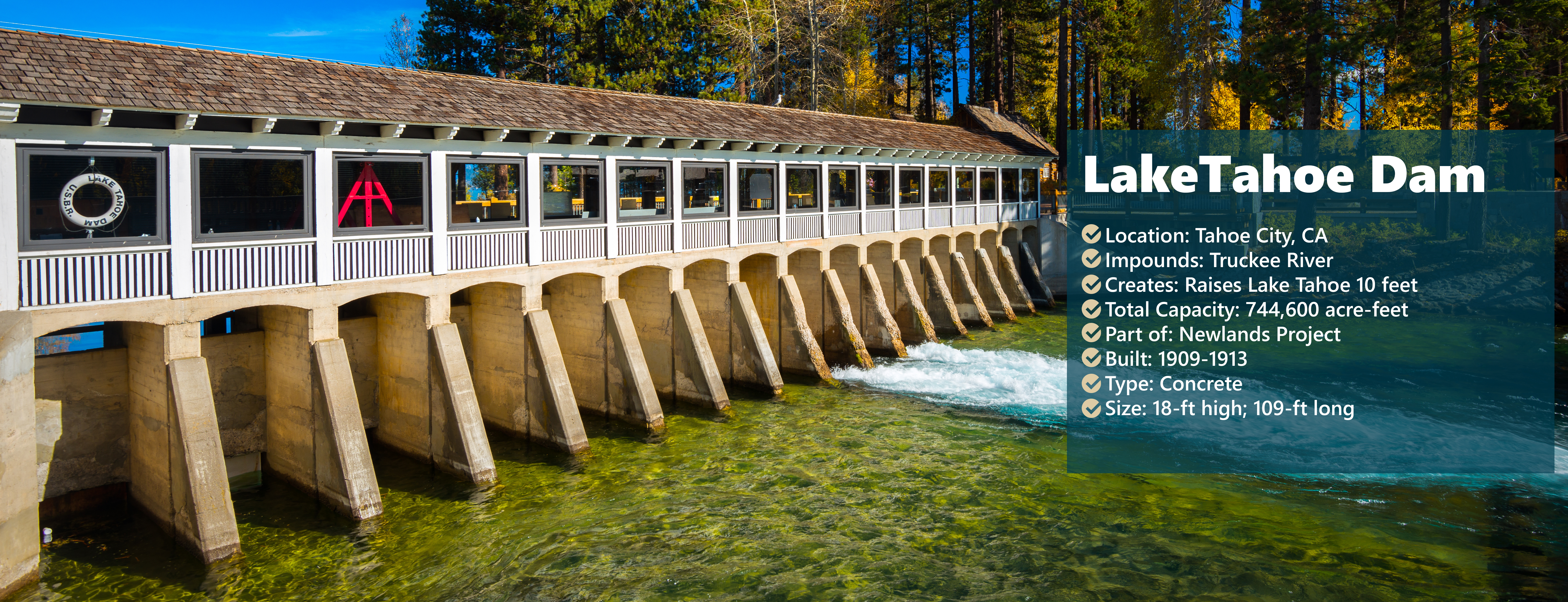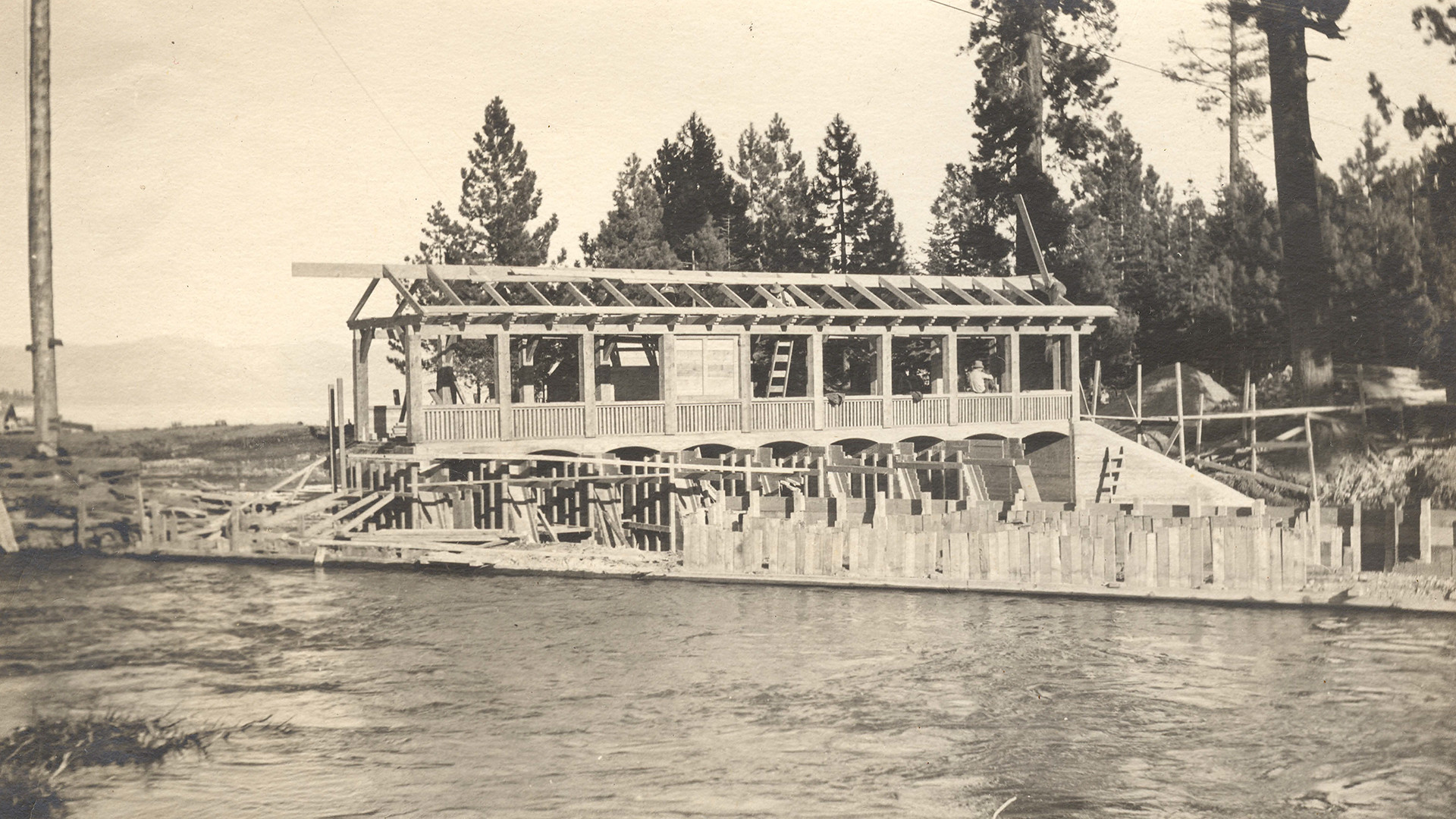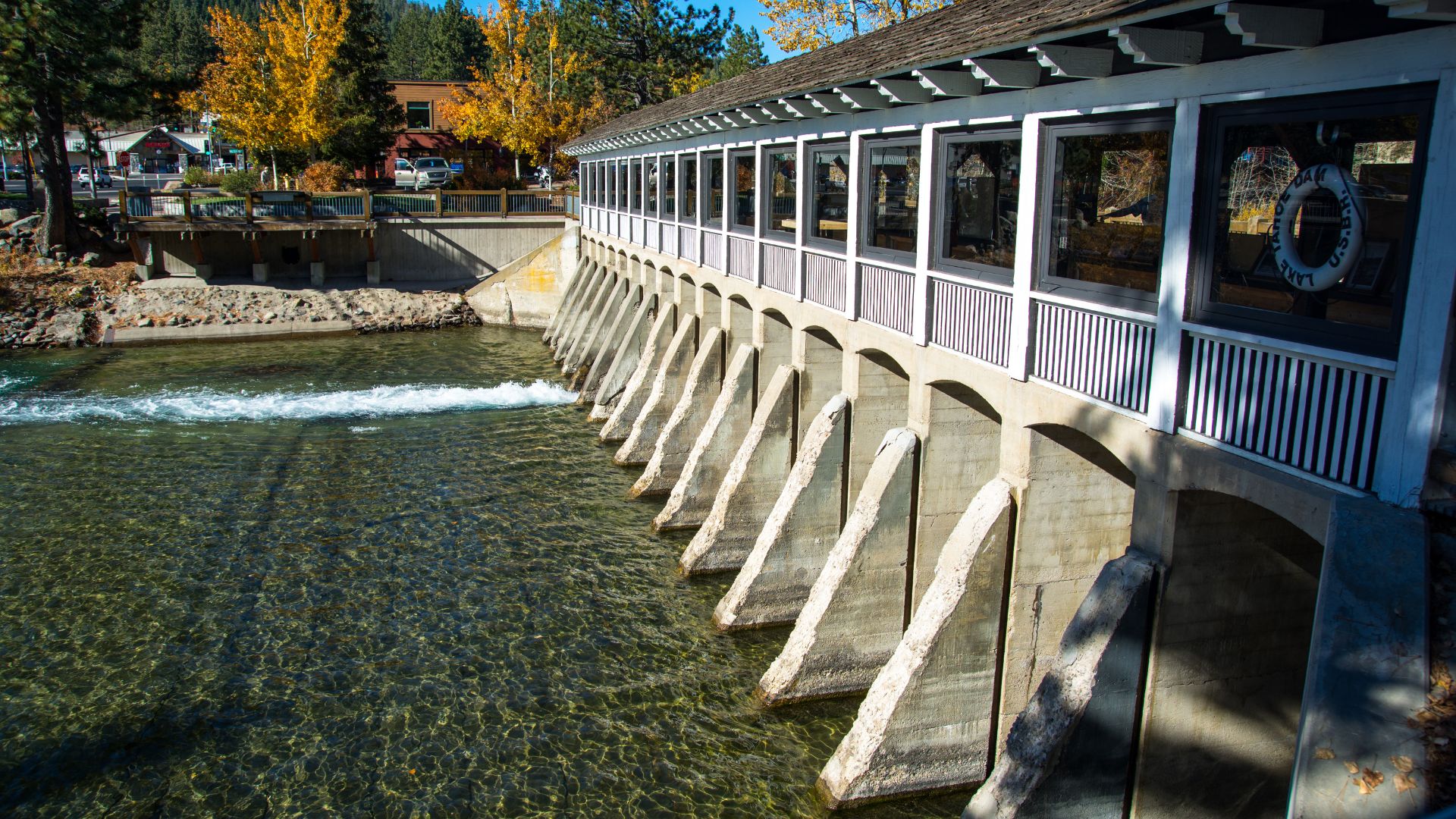- Reclamation
- California-Great Basin
- Area Offices
- LBAO
- Facilities
- Lake Tahoe Dam
Lake Tahoe Dam
Located on the Truckee River at the outlet of Lake Tahoe, in Tahoe City, CA, Lake Tahoe Dam is a concrete gravity dam, 18-foot high and 109-foot long. The dam controls the top 6.1 feet of Lake Tahoe and regulates the lake outflow into the Truckee River. Outflows from the dam are regulated by a gated spillway with 17 bays, with a maximum release capacity of 2,100 cubic feet per second.
The first dam on the Truckee River was constructed in the early 1870s to increase the river’s flow to help transport logs for construction of the transcontinental railroad and growing mining industry. In 1909, Reclamation began reconstructing a new dam in its place as part of the Newlands Project, one of Reclamation’s oldest projects. Lake Tahoe was initially envisioned as the main storage facility for the Newlands Project that also includes the Lahontan Dam and two diversion dams.

Lake Tahoe Dam was placed on the National Register of Historic Places. In 1987, the dam underwent structural updates to improve its earthquake resistance as part of Reclamation’s Safety of Dams Program.
Operations History
Reclamation claimed rights to water stored in Lake Tahoe in 1902 for the Newlands Project and began negotiations for control of the old Lake Tahoe Dam with the Truckee River General Electric Company in 1903. Negotiations continued for control of Lake Tahoe Dam while the dam was being reconstructed and an agreement was reached in 1915 with the Truckee River General Electric Decree. Lawsuits over control of the water in Lake Tahoe and the Truckee River continued over the years leading to the Truckee River Agreement in 1935 and the Orr Ditch Decree in 1944. Lawsuits continued however leading to the Truckee River Operating Agreement which was fully implemented in 2016. Today, a federal watermaster dictates the flows out of Tahoe Dam to ensure that the proper volume of water is released to meet minimum requirements for downstream users per the Truckee River Operating Agreement.
Lake Tahoe Dam Rehabilitation Study
Since the completion of Lake Tahoe Dam in 1913, substantial deterioration of the structure’s concrete has occurred. Much of the deterioration stems from the lack of air entrainment in the concrete, which was not widely used until the 1940’s. Air entrainment allows space for the expansion and contraction of water molecules as the concrete goes through freeze-thaw cycles. The temperatures at Lake Tahoe Dam routinely drop below freezing at night and climb above freezing during the day, resulting in deterioration of the concrete.
Attempted concrete repairs have been unsuccessful as the underlying concrete continues to deteriorate beneath the new repair materials. Gate operations are often affected as gates become stuck in the concrete slots or are unable to close due to concrete deteriorating and falling between the gate and the concrete walls.
A rehabilitation study to analyze the existing concrete, the surrounding geology, and potential alternatives for the rehabilitation or Repair of Lake Tahoe Dam began in October 2023. Reclamation plans to do field investigations this summer/fall at Lake Tahoe Dam. For more information on the rehabilitation study, contact Scott Schoenfeld.
News Releases and Stories
| April 22, 2025 | Reclamation to Conduct Geotechnical Study at Lake Tahoe Dam |
| December 2, 2024 | Lake Tahoe Dam Rehabilitation Styudy Kicks Off with Collection of Concrete Core Samples |




